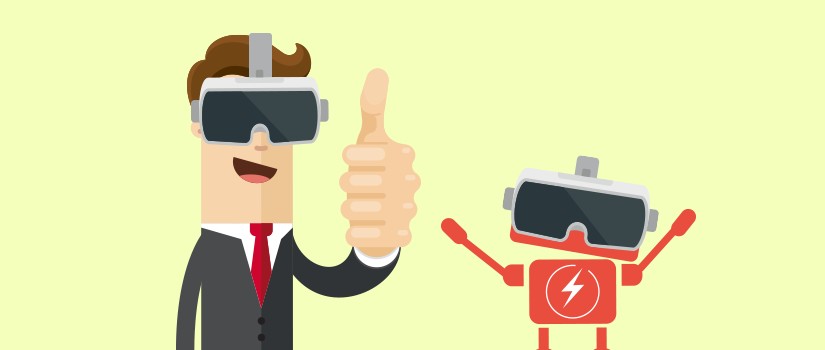Augmented Reality (AR) and Virtual Reality (VR) are no longer just futuristic technologies reserved for gaming and entertainment. In recent years, they have made significant inroads into the business world, transforming how companies operate, train employees, engage customers, and even design products. As AR and VR technologies continue to advance, their applications in business are expanding, offering innovative solutions and competitive advantages.
1. Enhancing Customer Experiences
Interactive Shopping
AR and VR are revolutionizing the retail industry by providing immersive and interactive shopping experiences. Customers can virtually try on clothes, accessories, or even see how furniture looks in their homes before making a purchase. This not only enhances the shopping experience but also reduces the likelihood of returns, increasing customer satisfaction and loyalty.
Virtual Showrooms
Automotive companies and real estate firms are using VR to create virtual showrooms. Customers can explore cars or properties in a detailed, immersive environment from the comfort of their homes. This allows for a more engaging experience and helps customers make informed decisions without the need for physical visits.
2. Transforming Employee Training and Development
Simulated Training Environments
AR and VR provide safe, controlled environments for employee training. Industries such as healthcare, aviation, and manufacturing use VR simulations to train employees on complex procedures without the risks associated with real-world training. This approach enhances learning outcomes and reduces training costs.
Remote Collaboration and Training
With AR and VR, companies can conduct remote training sessions and collaborative meetings. Virtual meeting rooms allow employees to interact and collaborate in real-time, regardless of their physical location. This is particularly beneficial for global teams, reducing travel costs and promoting a more inclusive work environment.
3. Innovating Product Design and Prototyping
Virtual Prototyping
AR and VR technologies enable designers and engineers to create and test virtual prototypes before building physical models. This speeds up the product development process, reduces costs, and allows for more iterations and refinements. Virtual prototyping is particularly valuable in industries like automotive, aerospace, and consumer electronics.
Real-Time Design Collaboration
AR and VR facilitate real-time collaboration between designers, engineers, and stakeholders. Teams can visualize and manipulate 3D models in a shared virtual space, making it easier to identify potential issues and make design adjustments early in the development process.
4. Enhancing Marketing and Sales Strategies
Immersive Marketing Campaigns
Marketers are leveraging AR and VR to create immersive and memorable campaigns that captivate audiences. From virtual tours of a brand’s history to interactive product demonstrations, these technologies provide unique ways to engage customers and build brand loyalty.
Virtual Product Launches
Companies can use VR to host virtual product launches, reaching a global audience without the limitations of physical events. Attendees can experience the product in a virtual environment, interact with its features, and even ask questions in real-time, creating an engaging and informative event.
5. Streamlining Operations and Maintenance
AR-Enabled Maintenance and Repair
AR applications are transforming maintenance and repair operations by providing technicians with real-time, hands-free access to information and instructions. By overlaying digital information onto physical equipment, AR helps technicians identify issues quickly and perform repairs more efficiently, reducing downtime and improving productivity.
Warehouse Management
In logistics and warehousing, AR can enhance inventory management and order-picking processes. AR glasses or mobile devices can guide workers through the warehouse, highlighting the location of items and providing real-time updates on inventory levels. This improves accuracy and efficiency in order fulfillment.
6. Revolutionizing Education and Training
Interactive Learning Experiences
Educational institutions are incorporating AR and VR into their curricula to create interactive and immersive learning experiences. Students can explore historical sites, conduct virtual science experiments, or even practice surgical procedures in a safe, virtual environment. This hands-on approach enhances engagement and retention.
Corporate Training Programs
Corporate training programs are also benefiting from AR and VR. These technologies offer employees immersive, scenario-based training that mimics real-world challenges. This approach not only improves skill development but also increases employee engagement and satisfaction.
Conclusion
AR and VR are transforming the business landscape, offering innovative solutions across various industries. From enhancing customer experiences and employee training to revolutionizing product design and marketing strategies, these technologies provide numerous benefits that drive efficiency, engagement, and growth. As AR and VR continue to evolve, their applications in business will only expand, offering new opportunities for innovation and competitive advantage.
